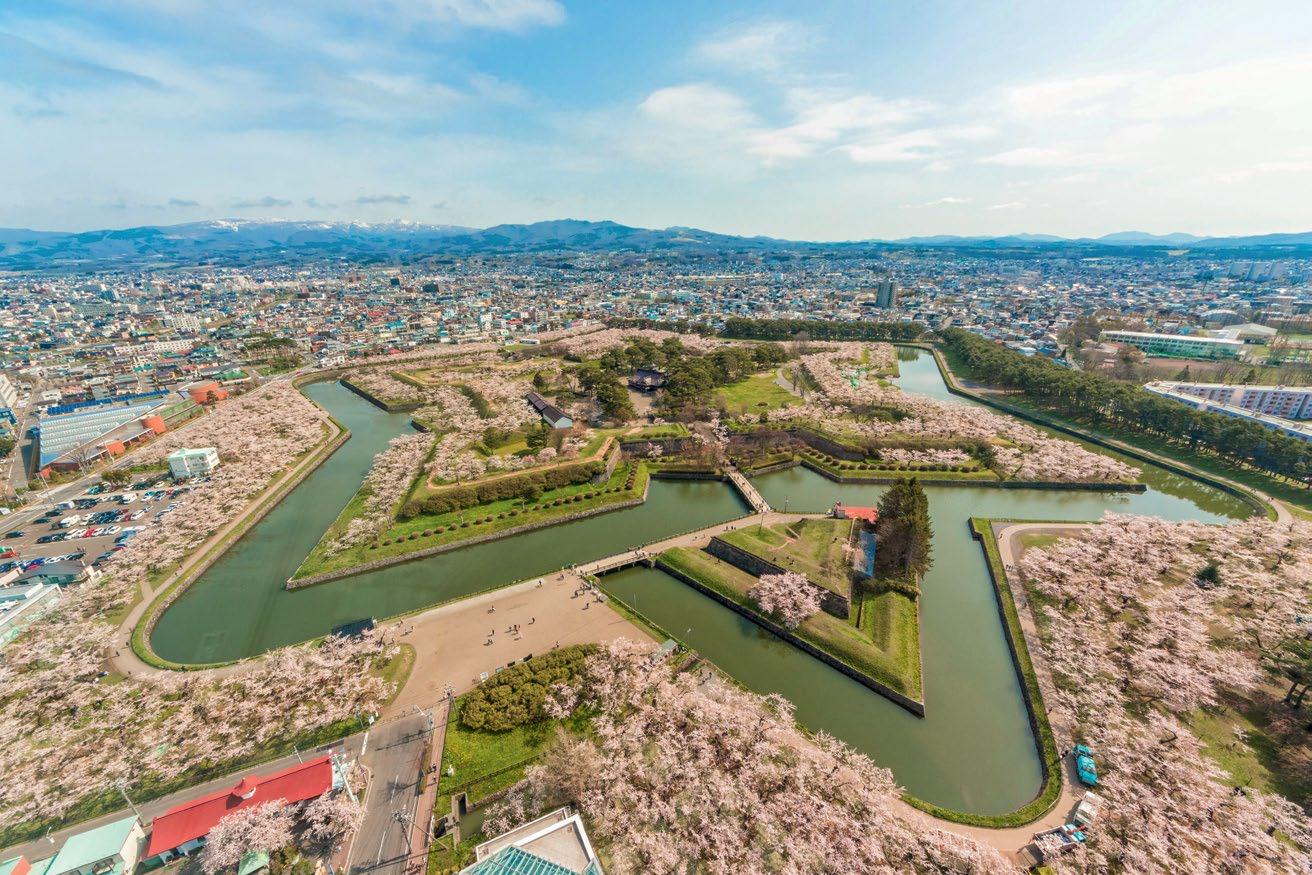
1 minute read
Hokkaido
Hokkaido province comprises about one-fifth of Japan’s total land area. It is the second largest and northernmost of Japan's four main islands; bordered by the Sea of Japan to the west, the Sea of Okhotsk to the north, and the Pacific Ocean to the east and south. Together with a few small adjacent islands, it constitutes a dō or province of Japan. Hokkaido was long the domain of the aboriginal Ainu peoples. Japanese settlement of the island began in 1869, when the territory, which was then called Yezo province, was renamed Hokkaido or North Sea Province. The Ainu people have a unique culture and they are working to revive traditional dances from old records and creating new Ainu music, preserving embroidery with unique patterns and crafting wooden carvings.
The climate is generally cool even during summer months but the winters can be harsh, with lots of snowfall, below-zero temperatures and frozen seas making it an ideal destination for winter activities, especially skiing. In summer it does not get as hot and humid as in the other parts of the country and the climate is perfect for various outdoor activities that Hokkaido offers visitors.
Advertisement
With its unspoiled nature, several national parks and rural landscapes, Hokkaido attracts many outdoor lovers; skiers and snowboarders in the colder seasons and hikers, cyclists and campers in the warmer months from around June to September. Sapporo which is the administrative headquarters is in the southwest on the Ishikari River. It is the province’s industrial, commercial, and tourist centre. Hokkaido University, founded in 1876, is located in Sapporo. Other important towns are the ports of Hakodate, Otaru, and Muroran.
The economic development of Hokkaido includes iron, steel, wood pulp, dairy, and fishing industries. Rice, soy and kidney beans, oats, barley, hay, and white potatoes are important crops. The island contains one of the largest coal deposits in Japan. Construction of the Seikan Tunnel, which was dug under the Tsugaru Strait in order to link Hokkaido with the main Japanese island of Honshu, was begun in 1964 and was completed in 1988. The tunnel carries a rail line between Hakodate on Hokkaido and Aomori on Honshu.
With so much to offer local and foreign visitors, a visit to Hokkaido will be nothing short of memorable and unforgettable.











